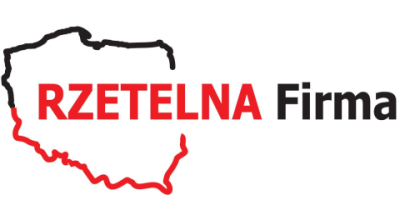Odpady to ogromny problem. Szacunki Banku Światowego pokazują, że na całym świecie każdego roku wytwarzamy około 2,01 miliarda ton odpadów stałych. Jednak co najmniej 33% tych odpadów nie jest gospodarowanych w sposób przyjazny dla środowiska — i to niezwykle ostrożne szacunki.
Znaczenie segregacji odpadów to coś, czego nie możemy dłużej ignorować. Niskie wskaźniki recyklingu można w dużej mierze przypisać nieodpowiedniej infrastrukturze do przetwarzania naszych śmieci, które w przeszłości były wysyłane za granicę w celu przetworzenia do krajów takich jak Chiny. Jednak wraz z wprowadzeniem przez Chiny zakazu importu zagranicznego papieru i odpadów z tworzyw sztucznych, stoimy w obliczu ryzyka niedoboru mocy produkcyjnych.
Dla firm sortowanie wytwarzanych przez nie odpadów handlowych jest kluczowym elementem skutecznego systemu ponownego wykorzystania i recyklingu.
Odpady handlowe należy przechowywać w pojemnikach, które zapobiegną ich wydostawaniu się. Wyraźnie oznakować pojemniki na odpady, aby wskazać rodzaj odpadów, jakie zawierają. Używać wodoodpornych pojemników, jeśli deszcz może spowodować wyciek zanieczyszczonego ścieku. Firmy zajmujące się odpadami niebezpiecznymi mają również dodatkowe obowiązki w zakresie przechowywania i sortowania. Na początek muszą przechowywać odpady niebezpieczne osobno, aby upewnić się, że się nie zanieczyszczają. Odpady niebezpieczne, takie jak baterie, urządzenia elektryczne, żarówki i elektronika, powinny być odpowiednio oznakowane, aby ułatwić ich recykling.
Znaczenie segregacji odpadów — dlaczego powinieneś sortować odpady Segregacja odpadów to sortowanie i rozdzielanie rodzajów odpadów w celu ułatwienia recyklingu i prawidłowej dalszej utylizacji. Prawidłowo posortowane odpady mogą zaoszczędzić pieniądze Twojej firmy. Segregacja odpadów powinna opierać się na:
Rodzaj odpadów
Najwłaściwsze traktowanie i usuwanie
Sortowanie odpadów ułatwia zrozumienie, jak zmniejszyć ogólną ilość odpadów, zidentyfikować przedmioty, które można ponownie wykorzystać i odłożyć na bok przedmioty, które powinny zostać poddane recyklingowi. Poza tym istnieje jednak również moralny imperatyw, aby być odpowiedzialnym za to, jak radzisz sobie z marnotrawstwem handlowym. Niewłaściwa segregacja odpadów handlowych oznacza, że zostaną one wymieszane na wysypiskach w taki sam sposób, w jaki zostały wymieszane w Twoich śmietnikach.
Odpady, takie jak resztki żywności, papier i odpady płynne, mogą się mieszać i rozkładać, uwalniając spływanie do gleby i szkodliwe gazy do atmosfery. Prawo wyraźnie stanowi również, że nielegalne jest mieszanie odpadów niebezpiecznych lub TZO — odpadów o wysokim poziomie trwałych zanieczyszczeń organicznych — z innymi odpadami niebezpiecznymi lub odpadami innymi niż niebezpieczne. Korzyści dla firm z prawidłowej segregacji odpadów to:
Niższe koszty odpadów: Mieszanie strumieni odpadów może być kosztowne. Odpady niebezpieczne i odpady ogólne są znacznie droższe w utylizacji niż recykling zmieszany na sucho ze względu na chemikalia i zanieczyszczenia biologiczne. Tak więc mieszanie czystych przedmiotów nadających się do recyklingu z odpadami niebezpiecznymi oznacza, że płacisz więcej za ich utylizację.
Zwiększony wskaźnik recyklingu: Praktyki segregacji odpadów i pracownicy, którzy rozumieją znaczenie sortowania odpadów, zapobiegają wyrzucaniu przedmiotów nadających się do recyklingu wraz z odpadami ogólnymi.
Potencjalne strumienie przychodów: Segregacja odpadów umożliwia identyfikację cennych materiałów, takich jak metale, tektura i tworzywa sztuczne, i sprzedaż ich w celu uzyskania najwyższej dostępnej wartości rabatu.
Zmniejszony wpływ na składowiska odpadów: Segregacja odpadów umożliwia Twojej firmie recykling większej liczby przedmiotów, zapobiegając ich trafianiu na wysypiska. To z kolei zmniejsza ogólny wpływ na środowisko. Właściwa segregacja odpadów obejmuje Twoich pracowników. Szkolenie personelu w zakresie prawidłowej utylizacji odpadów w Twojej firmie to nie tylko tworzenie polityk dotyczących odpadów, ale także edukowanie Twoich pracowników. Na przykład, po odpowiednim przeszkoleniu można uniknąć mieszania żywności z tekturą lub tworzywami sztucznymi (te ostatnie doskonale nadają się do recyklingu). Aby wesprzeć swoich pracowników, możesz również zastosować kolorowe kody i wyraźne oznakowania na pojemnikach w swoich obiektach, aby ułatwić pracownikom umieszczanie odpadów w odpowiednich pojemnikach.


